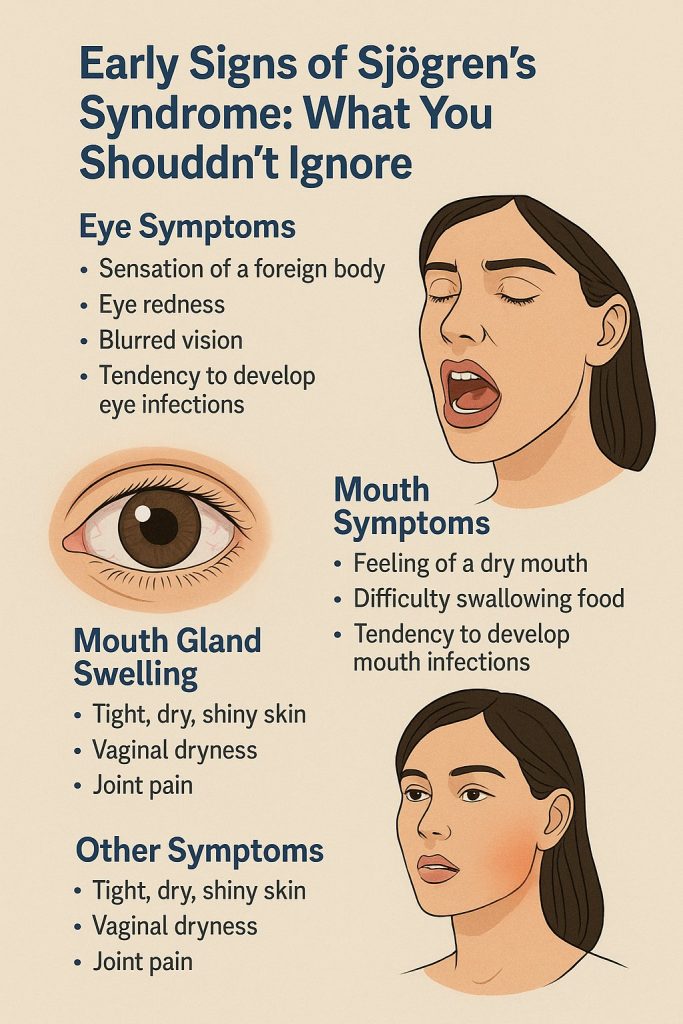Sjögren syndrome. What a name! It’s actually pronounced as “Show-grin”. The condition is almost as exotic as its pronunciation. It belongs to the group of diseases that result when the human immune system begins to destroy itself the way it destroys dangerous invaders. These are called autoimmune diseases. Other conditions like this include lupus and rheumatoid arthritis.
Sjögren syndrome specifically involves gradual destruction of certain glands in the body. The salivary glands and tear glands are very prominent in this destruction. This causes the chief symptoms of Sjögren syndrome namely: dry eyes and dry mouth.
While patients who have just Sjögren syndrome often have good outcomes, Sjögren syndrome hardly occurs alone. Patients often have both Sjogren and another rheumatoid condition like lupus or rheumatoid arthritis. This goes a long way in determining quality of life.
That’s why it’s good to recognize this condition early. Therefore pay attention to these symptoms.

Symptoms of Sjögren Syndrome
Eye Symptoms
The destruction of the tear glands causes dry eyes which leads to:
- the sensation of a foreign body trapped in the eye
- eye redness
- blurred vision
- a tendency to develop eye infections like infections of the eyelid
Mouth Symptoms
The salivary glands, especially the parotid gland located beneath the skin just in front of the ears, are affected as well, leading to:
- the feeling of a dry mouth
- difficulty swallowing food
- a tendency to develop infections of the mouth like yeast infections (oral thrush), tooth decay and gum inflammation
- bad breath
Parotid Gland Swelling
These massive salivary glands can swell and cause distortion of the sides of the face.
Other Symptoms
Sjögren syndrome affects not just the eyes and mouth. It can also lead to:
- tight, dry, shiny skin
- vaginal dryness leading to irritation and yeast infections
- joint pain and sometimes joint swelling
Complications of Sjögren Syndrome
When this disease is detected late, it may affect other organs like the thyroid, lungs, kidneys and nerves. Some people even get a blood cancer called a lymphoma. Others develop other rheumatoid conditions like lupus, rheumatoid arthritis and scleroderma.
Who Gets Sjögren’s Syndrome?
Sjögren’s Syndrome is an uncommon disease, affecting only about 0.6% of the global population. But if you’re:
- above 40
- a woman
- or if you have a family history of autoimmune diseases
then you are at an increased risk.
I Have Symptoms, What Next?
If you have some of the symptoms we listed earlier and you have risk factors, you should definitely check in with your doctor.
She may diagnose Sjögren’s Syndrome based on your history as well performing some basic eye tests and blood tests.
Then you will be placed on treatment and, if necessary, referred to an expert in diseases like this (called a rheumatologist).
Conclusion
Watch out for the symptoms of this rare disease. While outcomes are mostly good, complications might be devastating.
Read about the most famous of the autoimmune diseases: systemic lupus erythematosus.









